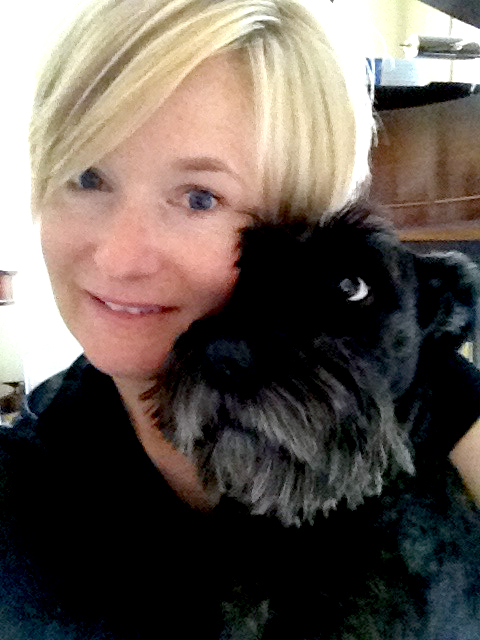September 6th, 2018
How To Grieve
Saying Goodbye to Phoebe
Phoebe was put down on Monday, September 18th, 2018. She could no longer walk and she became incontinent. Three days later I left Ohio to spend nine days visiting my folks, sit for a Peer Review to obtain my CPO-CD and to learn with some of my favorite people in the world at the ICD Conference. I was in a fog.
Phoebe was my sidekick. She came into my life during my first year of business. Phoebe Fridays started in 2013 on Facebook. You have seen lots of photos of Phoebe enduring my shenanigans. We had a lot of fun. I had dogs all my life, but never my “own.” You know pets. You know how they impact our lives. For four years, we walked, snuggled, hung out, did errands, traveled and celebrated life together.
Grief comes in waves. It is especially hard now after having been gone and returning to a house without Phoebe. I feel out of sorts. I am doing all the self-care that I know. Finding a new workout place near our new home is at the top of my list.
The Fog of Loss
Many of my clients have lost a loved one and they talk about being in a fog. Losing
a pet is like losing a family member—different—but similar in many ways. Navigating
a new routine is part of the grief process. So is: questioning whether I did the right thing, reflecting on good times, being grateful for thoughtful words from friends, and appreciating not cleaning up pee or getting up at 5:30 am ☺.
These things are all a part of grief and figuring out how to honor her legacy is part of
it too. I’m working on this piece and it will no doubt involve lots of pictures. Thank you for loving Phoebe. Below are helpful “tasks” to keep in mind when grieving. They came from a Teleclass through the Institute for Challenging Disorganization by Carol Berns.
Nine Tasks of Grief & Mourning:
- Acknowledge and accept the reality of the loss: saying “was”, not “is”
- Identify and express the emotions of grief: feel or not feel
- Commemorate the loss: through rituals and customs
- Acknowledge ambivalence: recognize conflicting feelings(i.e. relief, anger)
- Resolve the ambivalence: place positive and negative feelings in perspective
- Say good-bye: connect with a continuing bond (death ended the life, not the relationship) emotional bond through experiences, hobbies, and activities.
- Adjust to the environment without the deceased: self, home, world, responsibilities
- Adopt a present and future orientation: hopes, plans, visions are restructured
- Move toward a new identity/role: tap memories/stories when needed/wanted; find a ‘new fit’, aspirations, ‘encores’
We will float back and forth between these tasks. These are not stages—we don’t have to progress through them in an order. When having difficulty accepting loss, we are not crazy, we are just still in pain.




